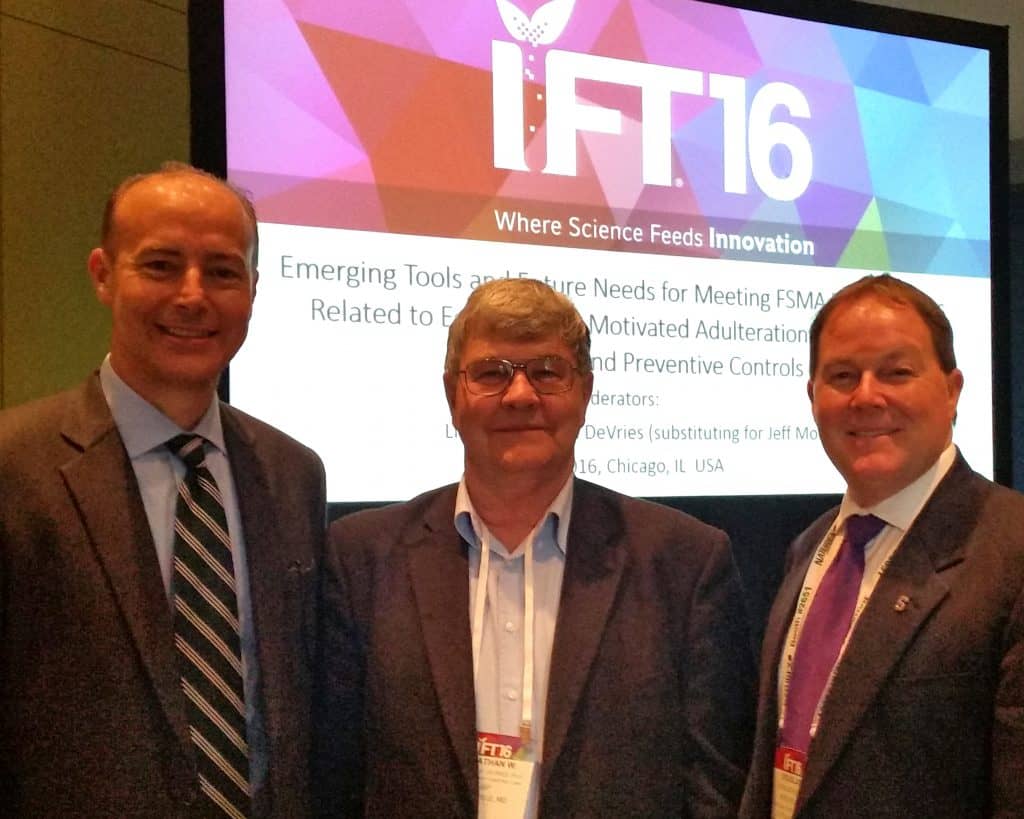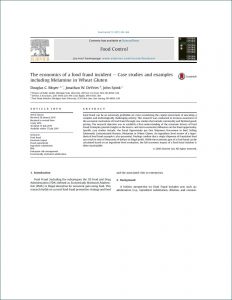From time to time we share here a flashback to previous posts that remain relevant today. This week we revisit a journal article that focused on the economics of a food fraud incident from the perspective of the victim and the fraudster. While macro-level factors are important (e.g., inflation or high prices), the fraudster makes micro-level decisions based on their individual opportunities.
From our current position in 2023, the most insightful aspect of this article is the emphasis on the fraudster’s perspective. This article includes several case study examples that can be used to understand and evaluate current fraud opportunities. The insight published in this scholarly journal article provides more detailed methods or processes to address food fraud prevention fully.
Publication – The Economics of a Food Fraud Incident – Case Studies and Examples, Including Melamine in Wheat Gluten
By John Spink / January 18, 2017
We all know Food Fraud occurs for economic gain, but it is more complex than just “profit margin” or “commodity price swings.” Reviewing the incidents provides insight on exactly how and where bad guys are attacking… which is critical to prevention and selecting countermeasures.

Dr. John Spink, Dr. Jonathon DeVries, Dr. Doug Moyer
New Publication:
- The Economics of a Food Fraud Incident – Case Studies and Examples, Including Melamine in Wheat Gluten
- URL: http://www.sciencedirect.com/science/article/pii/S0956713516303784
This new journal article was sparked by co-author Dr. Jonathon DeVries (General Mills/ Medallion Labs, now retired) presentation at the 2013 US Pharmacopeia Economic Adulteration Workshop. With Dr. Doug Moyer, our author team kept exploring the underlying factors and drivers, and continued expanding the examples. This work was the result of a research need we all saw during many different industry and association activities.
Doug and I are especially honored to publish with Dr. DeVries. He is a true industry leader and innovator for a range of food safety and related analytical chemistry activities including with US Pharmacopeia, AOAC (formerly the Association of Official Analytical Chemists), GMA Food Industry Analytical Chemists Committee, ASTM and others. He is widely published with more than 40 scholarly articles.
Research Project

This research was the first publication that focused on the economics of individual Food Fraud incidents. Beyond just the economics for the criminal, we focused on the impact on the brand owners. In addition, we included specific incident case studies to further examine complex issues such as deceptive vs. non-deceptive products, the influence of macro- and micro-economic motivation characteristics, economic gain motivation and loss avoidance.
From the article:
“ABSTRACT: Food Fraud can be an extremely profitable act even considering the capital investment of executing a complex and technologically challenging activity. This research was conducted to increase awareness of the economic motivation of Food Fraud through case studies that include commodity and finished goods pricing. The research objective was to establish a firm understanding of the economic drivers of Food Fraud. Examples provide insight on the macro- and micro-economic influences on the fraud opportunity. Specific case studies include: the Fraud Opportunity per One Shipment, Horsemeat in Beef, Selling Salmonella-Contaminated Peanuts, Melamine in Wheat Gluten. An ingredient level review of a hypothetical Food Fraud example is also presented.
The loss of a sale is costly but the impact on a company or brand could be catastrophic:
- “Findings confirm that a single shipment of fraudulent food can result in tens of thousands of dollars in illegal profit [for the fraudster]. While the economic gain of Food Fraud can be calculated based on an ingredient-level evaluation, the full economic impact of a Food Fraud incident is often incalculable [for the brand owner].”
Probably the most significant finding was that overall profit margin and global commodity price swings are significant, but it is dangerous to not focus on individual or micro-level factors:
- “Macro-level characteristics include global pricing, commodity supply and demand, food laws and compliance, and general aspects of the national/ international supply chain. Micro-level characteristics are factors that apply to individual fraudsters including: businesses or activities; location (i.e. city, state or province, country, region); working and business relationships (e.g., processes both horsemeat and beef); and specific cost drivers (e.g., waste or by-product disposal costs, etc.).”
- “While global and overarching characteristics such as shifting commodity prices and regional or global supply shortages contribute to the overall fraud opportunity, they may not be the deciding factor that motivates a Food Fraud act. For example, access to special or unique manufacturing operations can be the deciding factor for perpetrating a unique fraud opportunity.”
Food Control Journal
We especially appreciate the effort by the Food Control journal editors and reviewers, including Dr. Joseph Jwu-shan JEN. Food Control reviewers and Editor Jen have been excellent resources who have both challenged and encouraged our scholarship. In an evolving or emerging field there is both the need and the challenge of exploring new ideas. As an author team we have been enabled to pursue ‘new knowledge’ and then follow-up to test the theories.
Application
As we expand our research team network and further explore new aspects of Food Fraud, we are all building a foundation. Our team is constantly searching for new research and researchers. This article is both formalizing a new research relationship with Jon Devries and providing a deeper dive into the mechanics of Food Fraud. Please build upon this research project and contact us if you would like to collaborate.
Reference
- Moyer, DC, DeVries, JW, & Spink, J (2017), The Economics of a Food Fraud Incident – Case Studies and Examples Including Melamine in Wheat Gluten, Food Control, Volume 71, Pages 358-364. (Accepted July 15, 2016) (ISI Impact Factor 3.259; SJR 1.559), URL: http://www.sciencedirect.com/science/article/pii/S0956713516303784

